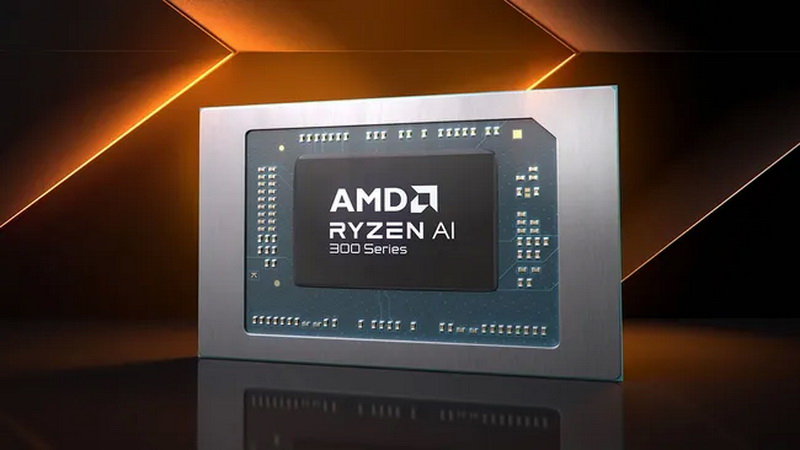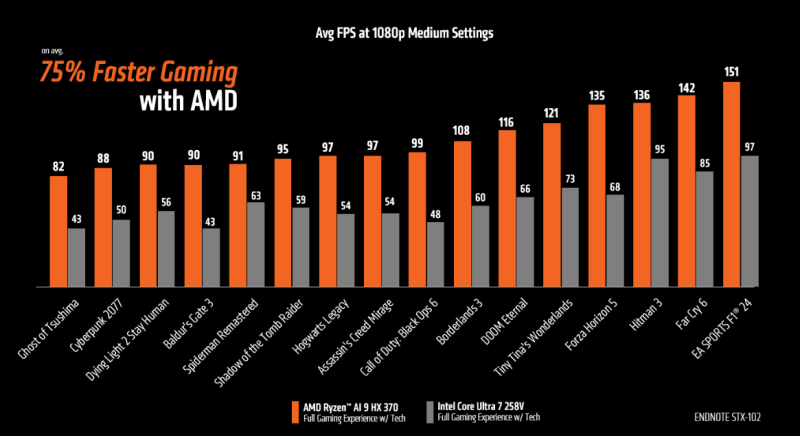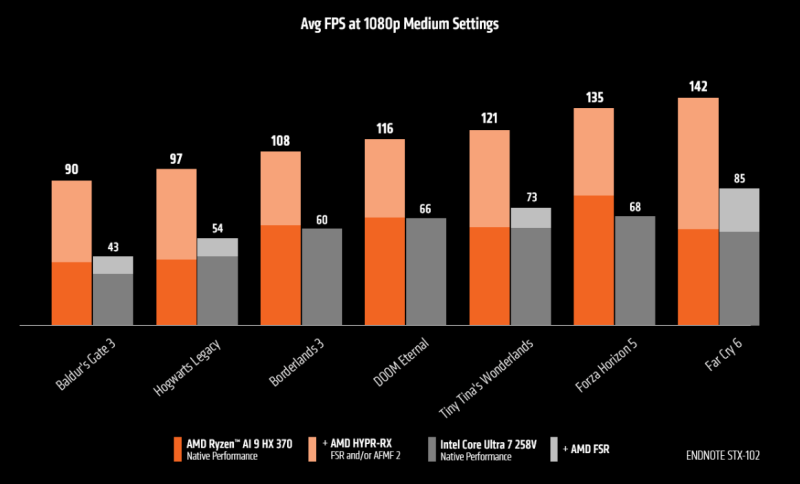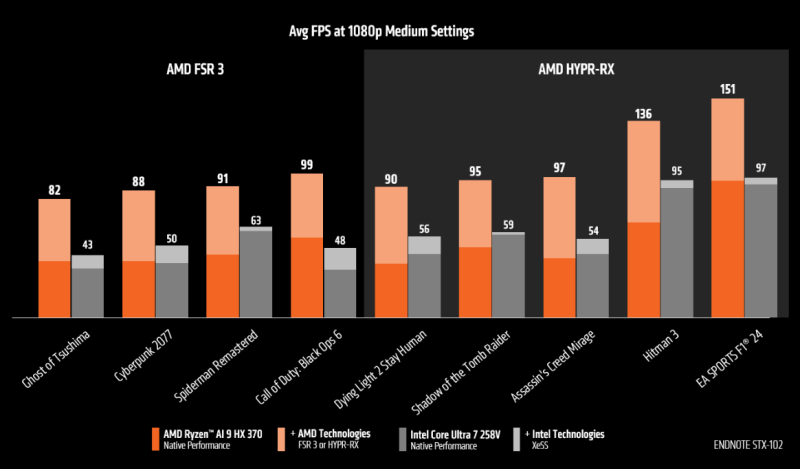AMD boasted on its official blog about the incredible gaming performance of its Ryzen AI 300 mobile processors. The company claims that its chips are on average 75% faster than Intel Lunar Lake processors. In reality, things are somewhat different.

Image source: AMD
AMD’s data is based on 16 gaming tests at 1080p using medium graphics quality settings. In them, the company compares the Ryzen AI 9 HX 370 with integrated Radeon 890M graphics and the Intel Core Ultra 7 258V processor with Arc 140V graphics. According to AMD, on average the Ryzen AI 9 HX 370 demonstrates a 75 percent advantage over the Core Ultra 7 258V. For example, in Black Ops 6, the red chip provides 99 frames per second, while the blue competitor only provides 48 frames per second. Sounds great until you pay attention to the details of the tests performed.

For its processor, AMD uses all possible software performance accelerators. In particular, these are scaling and frame generation technologies in FSR 3, and in games without FSR 3 support, frame generation based on the AFMF 2 driver is used as a replacement. HYPR-RX software package, which allows the use of Anti-Lag technologies, AMD Fluid Motion Frames 2 (AFMF2), Radeon Super Resolution (RSR), Radeon Boost and/or FidelityFX Super Resolution (FSR) were also used in games that support it. RSR and AFMF2 technologies work through AMD drivers to provide frame generation and spatial scaling (FSR1) for games that do not natively support frame scaling/generation, while Radeon Boost dynamically reduces rendering resolution in individual scenes.

To test the Intel processor, AMD used only Intel XeSS scaling technology, as well as FSR where XeSS was not supported. It should be noted that XeSS does not have frame generation technology, which automatically puts AMD in a better position. It is also known from past tests that FSR still works better on AMD video cards than on competing solutions, despite universal support.
AMD also showed the raw performance of both processors without using any upscalers or frame generators. In these conditions, the AMD processor equipped with integrated Radeon 890M graphics provided almost the same performance as a Core Ultra 7 258V with Arc 140V graphics. The Intel chip was even faster than the Ryzen AI 9 HX 370 in some games, including CoD: Black Ops 6 and Hitman 3. However, AMD did not provide exact frame rate data, showing only a histogram, making it impossible to clearly determine how much faster the 258V or slower than HX 370.

As with any internal tests, AMD’s claim of 75 percent superiority should be taken with a grain of salt. AMD’s post primarily touts a potential 75% performance boost by using software-based techniques to reduce graphics load and improve performance. But without this software, AMD’s own numbers show its Ryzen AI 9 HX 370 performing on par with the Intel Core Ultra 7 258V. This is largely consistent with the results of independent reviews. As Tom’s Hardware noted, in its tests without using software acceleration technologies, the Intel chip at 720p resolution was on average 6.7% faster than the AMD processor, and at 1080p resolution it was 5.5% faster.